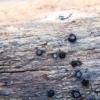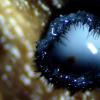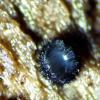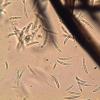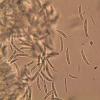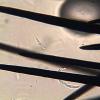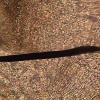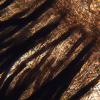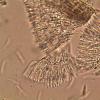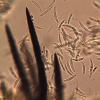
09-03-2015 10:44
 Blasco Rafael
Blasco Rafael
Hola, esta otra muestra es sobre Corylus a unos 12

03-03-2015 21:06
Hi to all I need again your help with this fungus

15-04-2014 02:06
Nick AplinSalut à tous, I wonder if anyone can help me wit

06-03-2015 13:53
De Galicia, en jardin entre arboles diversosA v

06-03-2015 18:09
Martin PastircakHi to all,I would appreciate if someone has this a

06-03-2015 14:11
 Zuzana Sochorová (Egertová)
Zuzana Sochorová (Egertová)
Hello,please, has someone got the monograph on Coo
Anamorfo en Corylus
Blasco Rafael,
09-03-2015 10:44
 Hola, esta otra muestra es sobre Corylus a unos 1200 m, rama descortezada ,soleada, estaban en la parte inferior.
Hola, esta otra muestra es sobre Corylus a unos 1200 m, rama descortezada ,soleada, estaban en la parte inferior.1,4 diametro la mayor.
Conidios con dos apendices de 2--2,6 micras en los extremos, miden sin contar estos apendices entre 14--16 x 1,6--2,5.
Pelos de base simple 290 x 5--7, no los he podido medir bien los mas largos estan en grupos densos y no permiten medirlos.
Un saludo
Rafael
Lothar Krieglsteiner,
09-03-2015 10:50

Re : Anamorfo en Corylus
For me, this looks much like Pseudolachnea hispidula that ist common on herbaceous stems. I never found it on wood, but ... why not?
Regards from Lothar
Blasco Rafael,
09-03-2015 11:22

Re : Anamorfo en Corylus
Hola Lothar.
lo que he visto de Pseudolachnea hispidula parece que encaja bien, tanto macro como micro.
Gracias y un saludo
Rafael
lo que he visto de Pseudolachnea hispidula parece que encaja bien, tanto macro como micro.
Gracias y un saludo
Rafael
Gernot Friebes,
09-03-2015 13:57
Re : Anamorfo en Corylus
Hi Rafael,
could you tell us if the conidia are septate? They should be 1-septate in Pseudolachnea. If they are aseptate then it might be a Dinemasporium or something similar.
Best wishes,
Gernot
could you tell us if the conidia are septate? They should be 1-septate in Pseudolachnea. If they are aseptate then it might be a Dinemasporium or something similar.
Best wishes,
Gernot
Blasco Rafael,
09-03-2015 14:48

Re : Anamorfo en Corylus
no logro ver ningun septo en los conidios
Rafael
Rafael
